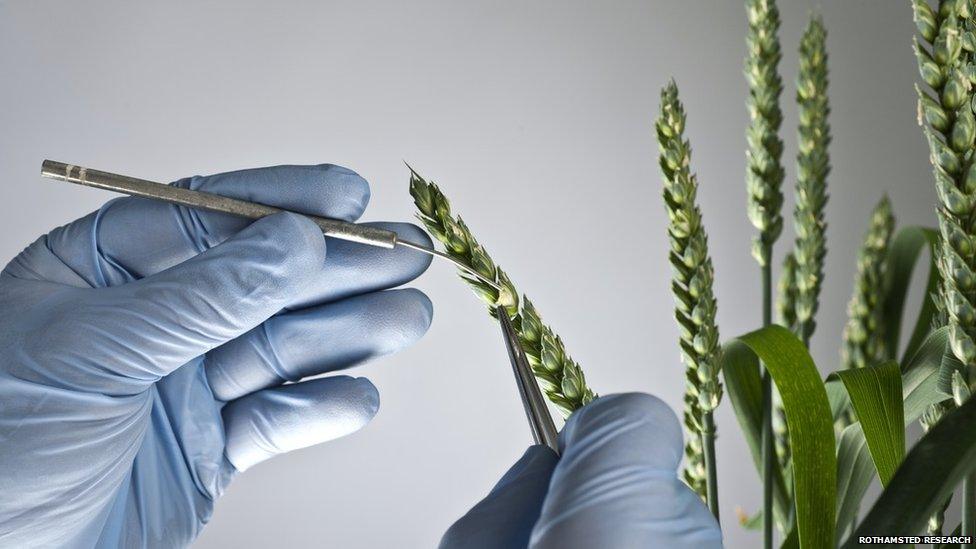Scientists find secret to healthier white bread
- Published

Dr Alison Lovegrove said the high-fibre white loaf tastes the same as normal white bread
Healthier white bread could be available on supermarket shelves within five years after scientists discovered how to double its fibre content.
A group of scientists has pinpointed the genes responsible for the dietary content of flour.
They say the new flour offers a range of health benefits such as a reduced risk of cancer, diabetes and obesity.
Study lead author Dr Alison Lovegrove said the high-fibre loaf would taste the same as normal white bread.
The research was carried out by the University of Bristol, Rothamsted Research Institute in Hertfordshire and the John Innes Centre in Norwich.
The team's work identified the parts of the wheat genome controlling fibre content of white flour.

The team's work included wheat embryo isolation
"Using conventional breeding techniques, we crossed this high-fibre trait into several other varieties," Dr Lovegrove said.
"This allowed us to narrow down where in its genome the genes for high fibre are.
"We've developed genetic markers that can easily be used by plant breeders to identify which individual wheat plants have the high-fibre genes."
A slice of typical white bread has about 1g of fibre, whereas a slice from a high-fibre white loaf could contain up to 2g. Wholemeal has about 3g.
Wholemeal bread is widely regarded as being healthier but white bread still outsells it, making up three-quarters of the roughly 12 million loaves sold in the UK each day.
Dr Lovegrove said: "We made some bread from our high fibre wheat and it tastes exactly the same.
"We have to get this high-fibre trait into commercial wheat lines. We think it will take five to six years as a best case scenario."